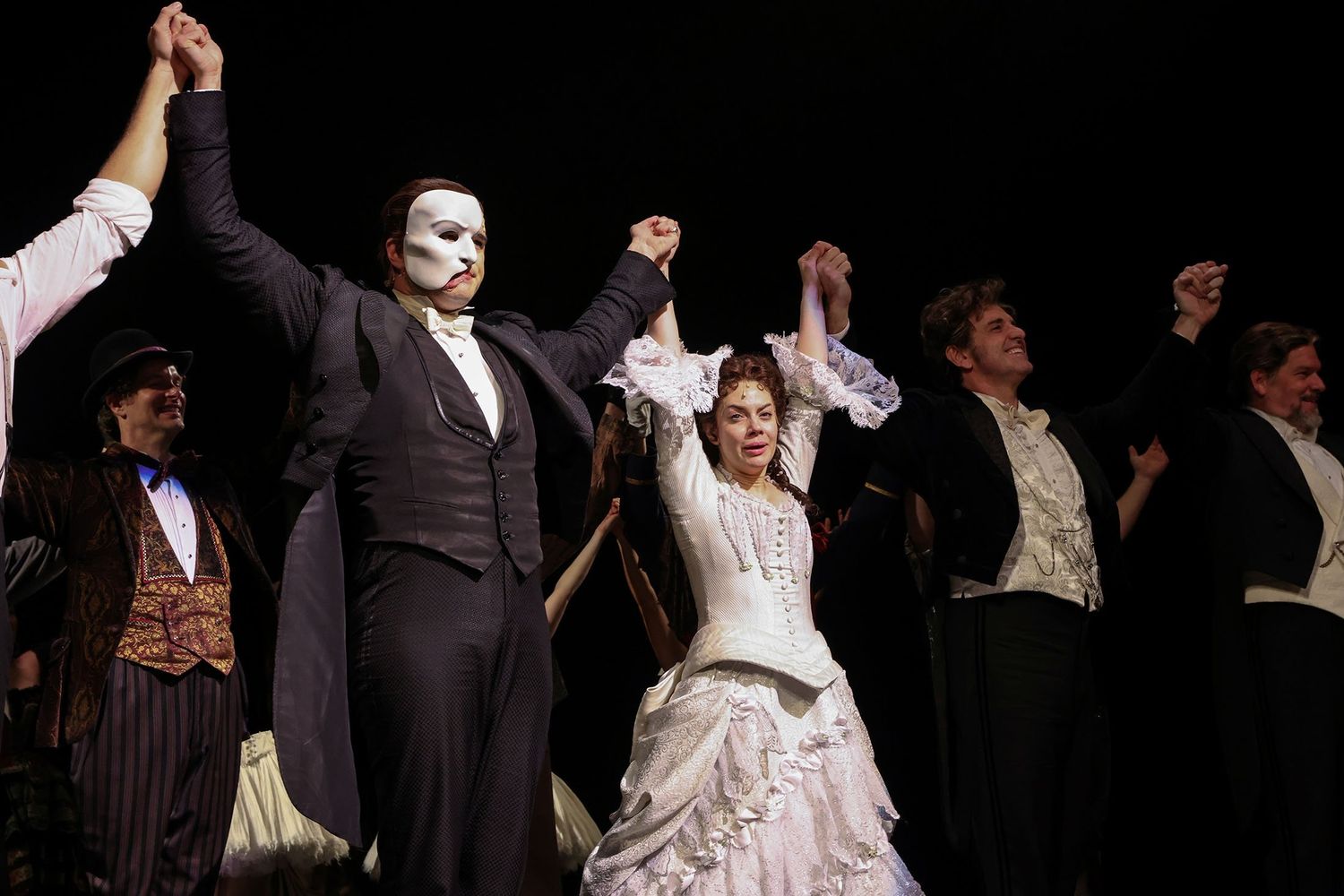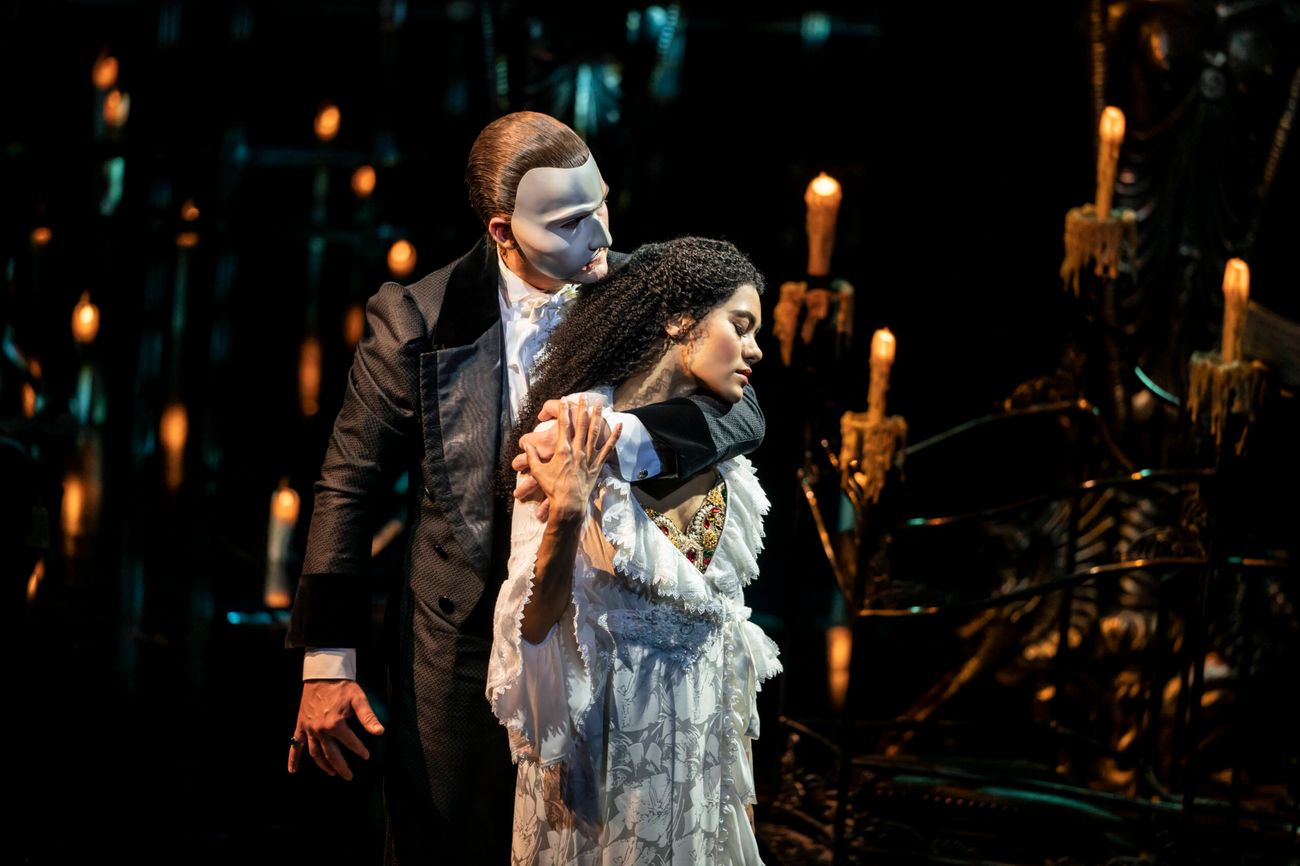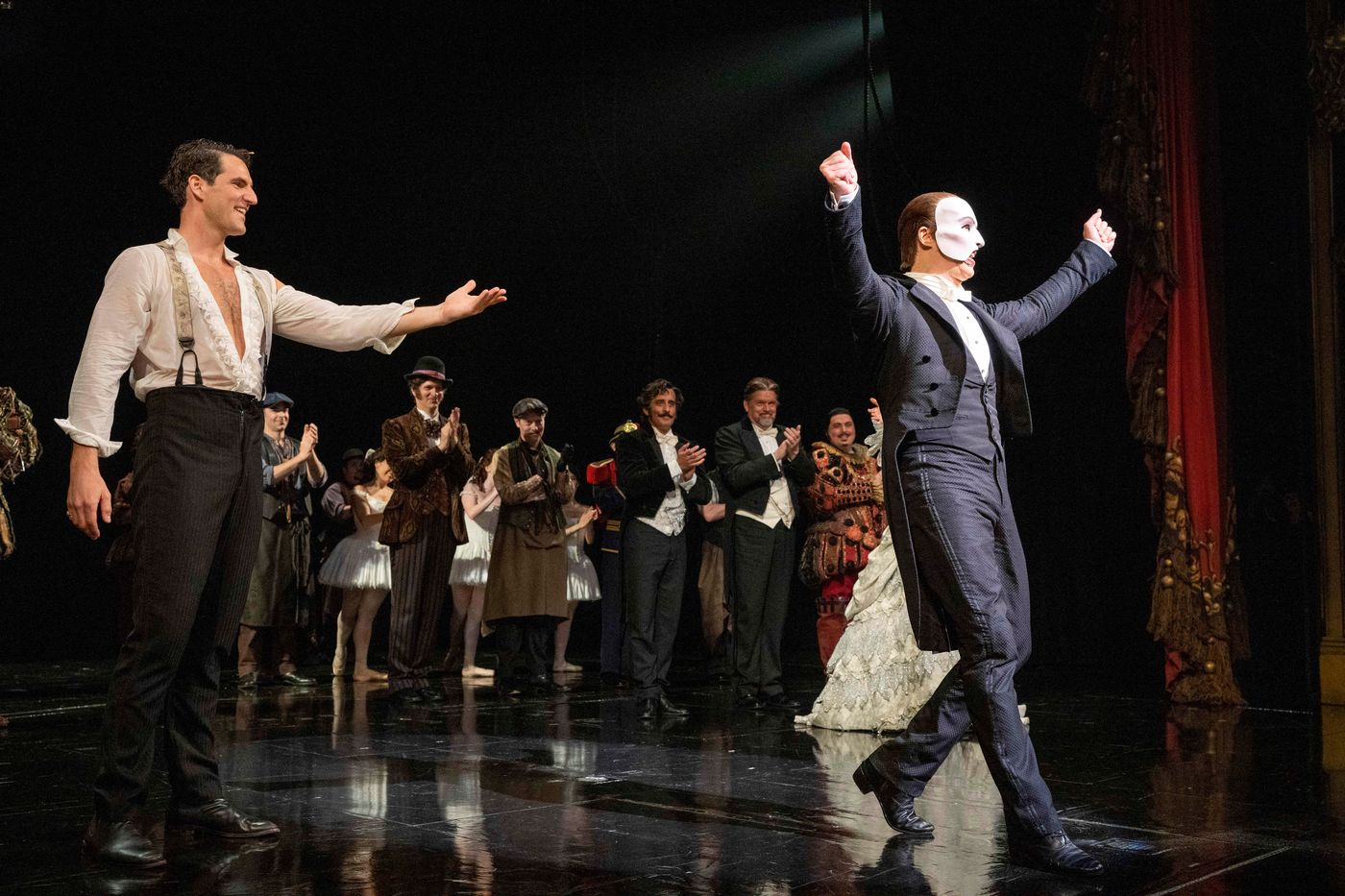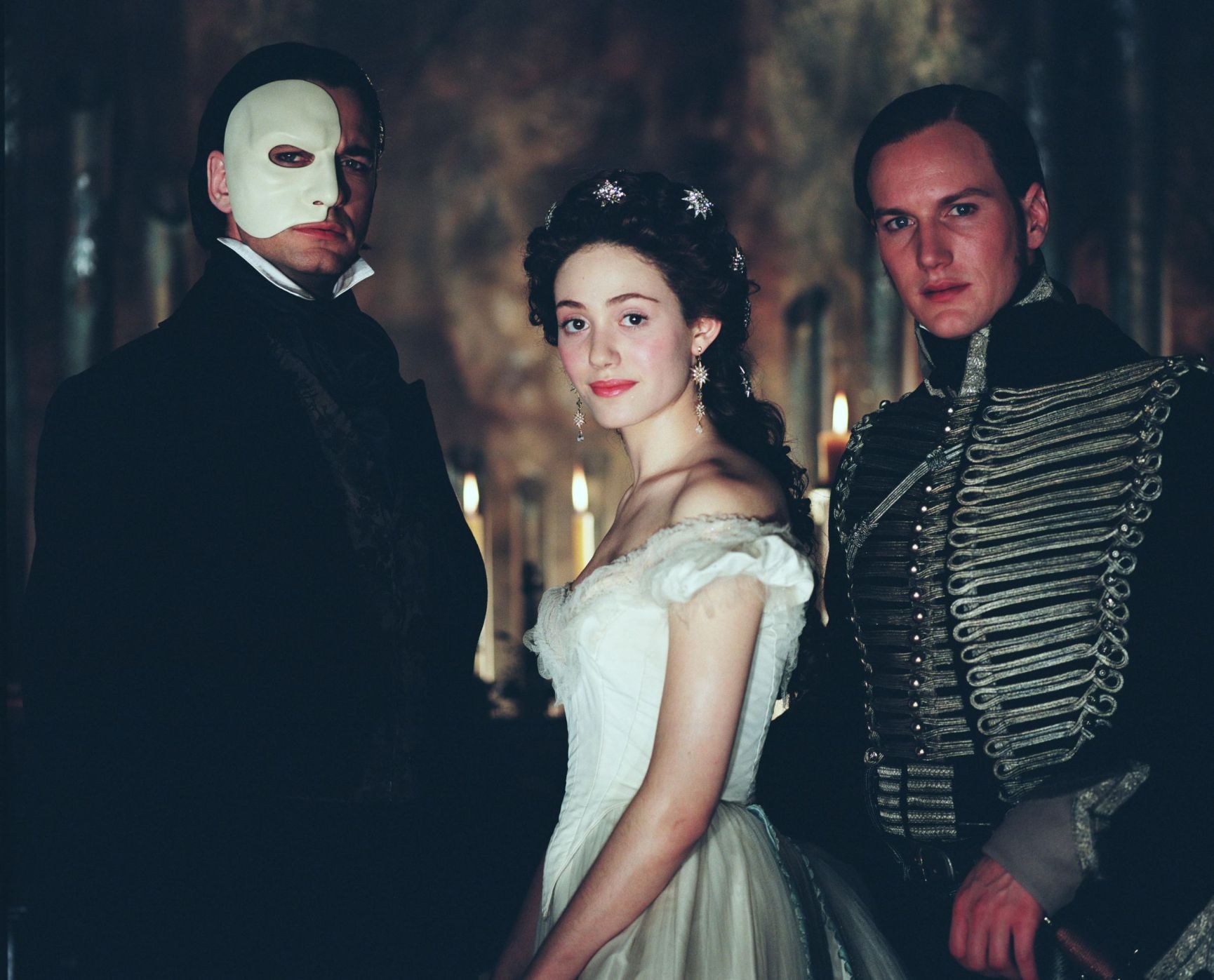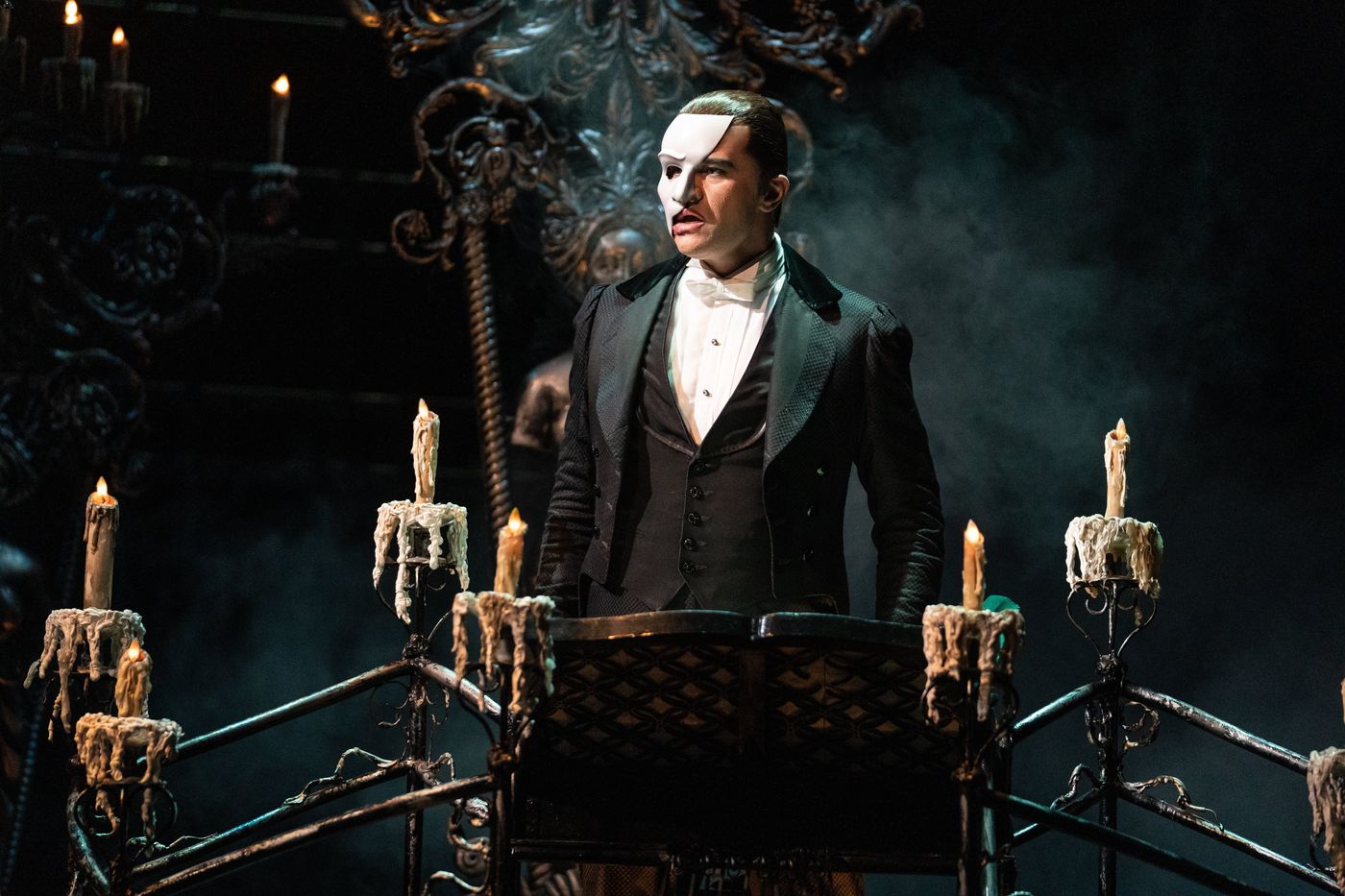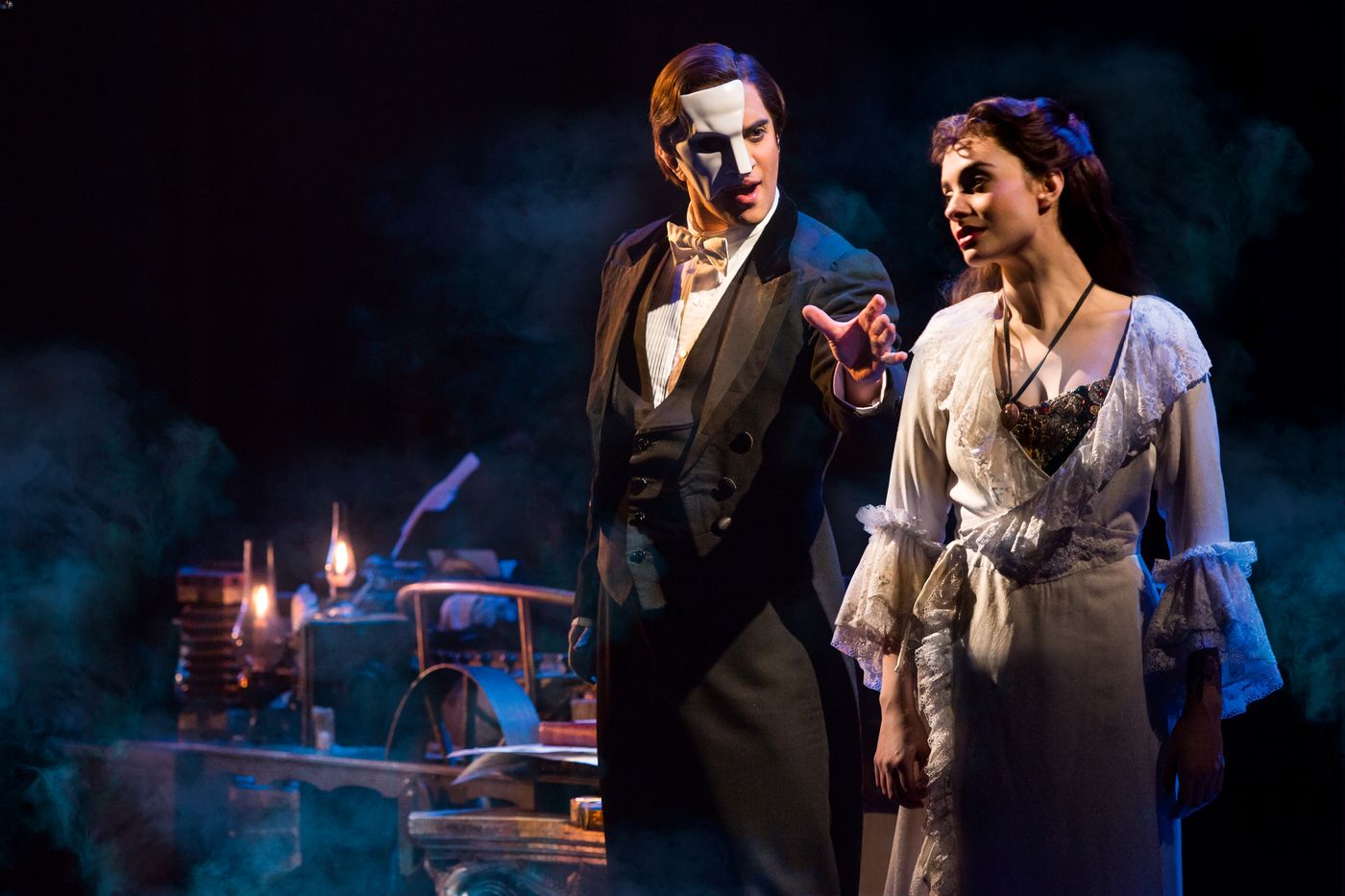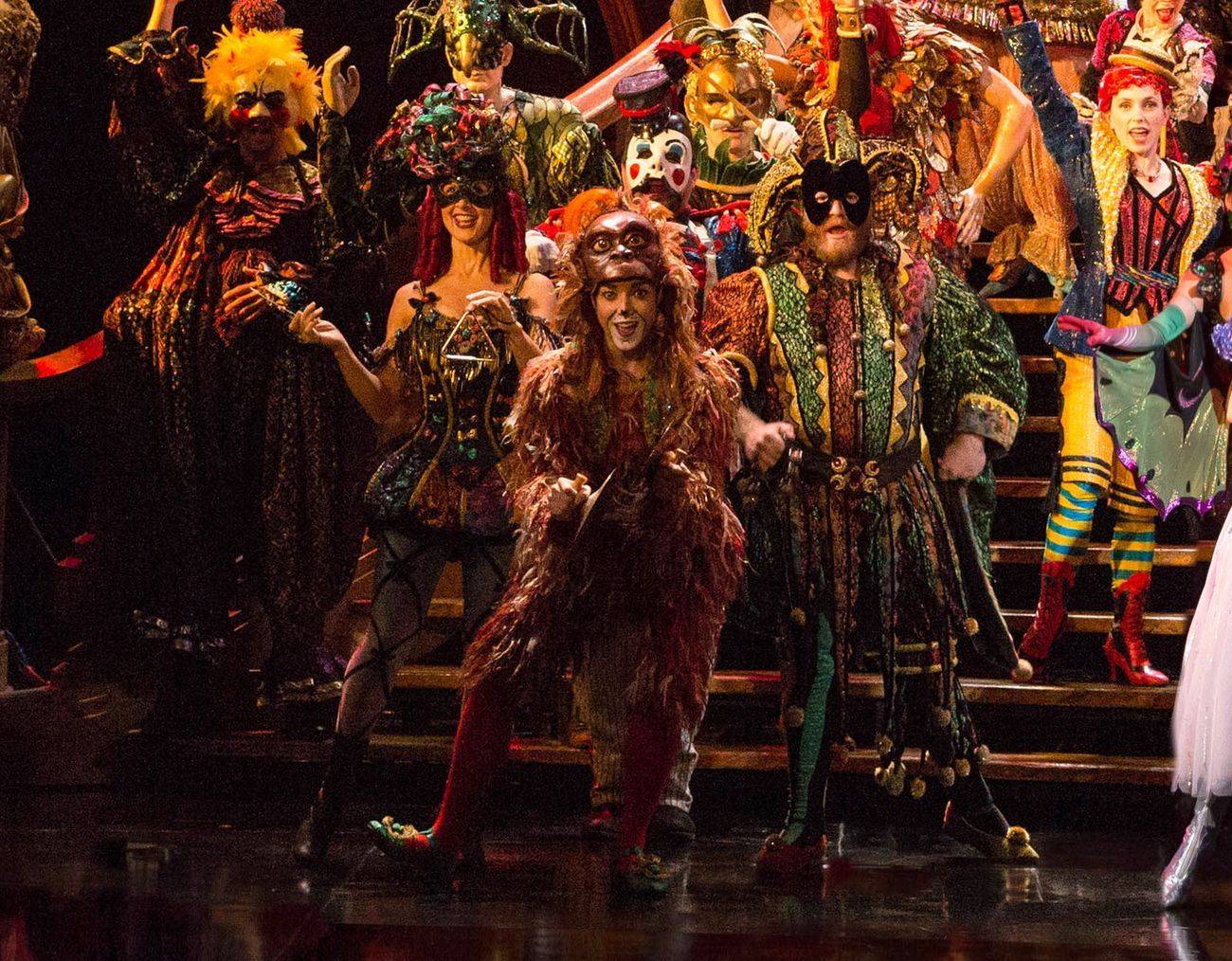Home>Events & Info>Opera>What Is Phantom Of The Opera Based On


Opera
What Is Phantom Of The Opera Based On
Modified: January 22, 2024
Discover the captivating story behind the timeless opera, Phantom of the Opera, and explore the fascinating world of love, tragedy, and mystery within the opera house.
(Many of the links in this article redirect to a specific reviewed product. Your purchase of these products through affiliate links helps to generate commission for AudioLover.com, at no extra cost. Learn more)
Table of Contents
- Introduction
- The Novel: “Le Fantôme de l’Opéra”
- The Author: Gaston Leroux
- Setting: The Paris Opera House
- Characters in “The Phantom of the Opera”
- The Phantom’s Backstory
- Christine Daaé: The Leading Lady
- The Love Triangle: Phantom, Christine, and Raoul
- The Haunting and Mysterious Events
- Adaptations of “The Phantom of the Opera”
- Conclusion
Introduction
When it comes to iconic stories of love, obsession, and mystery, few can rival “The Phantom of the Opera.” This enduring tale has captured the imagination of audiences around the world for over a century, enchanting them with its haunting melodies and gripping narrative. “Phantom of the Opera” is not only celebrated for its captivating music but also for its rich history and deep-rooted cultural significance.
Originally a French novel titled “Le Fantôme de l’Opéra,” written by Gaston Leroux in 1910, the story has since been adapted into numerous plays, films, and, most notably, the record-breaking Andrew Lloyd Webber musical. Its enduring popularity is a testament to its timeless themes and the impeccable storytelling that continues to captivate audiences of all generations.
Set against the backdrop of the prestigious Paris Opera House, “The Phantom of the Opera” takes us on a captivating journey into a world of passion, secrets, and unrequited love. The opera house itself becomes a character in its own right, with its opulent halls, hidden passageways, and grandeur adding to the allure and mystique of the story.
At the heart of the narrative lies the enigmatic character known as the Phantom, a disfigured musical genius concealed behind a mask. His obsession with the talented young soprano, Christine Daaé, fuels a love triangle between the Phantom, Christine, and her suitor, Raoul. As the story unfolds, we are drawn deeper into the Phantom’s tortured past, his longing for acceptance and love, and the lengths he will go to possess the object of his affection.
This article is a comprehensive exploration of “The Phantom of the Opera,” delving into its origins, characters, and the evocative themes that have made it such an enduring masterpiece. From the novel that inspired it all to the various adaptations that have brought it to life, this article will provide an immersive journey into the enchanting world of “The Phantom of the Opera.”
The Novel: “Le Fantôme de l’Opéra”
Le Fantôme de l’Opéra,” written by Gaston Leroux, is the novel that laid the foundation for the captivating story of “The Phantom of the Opera.” First published in 1910, the novel takes readers on a thrilling journey into the dark underbelly of the Paris Opera House.
Set in 19th-century Paris, the story revolves around the mysterious and elusive Phantom who haunts the opera house. Descending upon the institution like a shadowy figure, the Phantom’s presence is shrouded in secrets and whispers. Leroux masterfully crafts an atmosphere of tension and intrigue, drawing readers into a world filled with secrets, hidden passages, and unexplainable phenomena.
The narrative follows the intertwining lives of the characters: Christine Daaé, a talented young soprano; Raoul, Viscount of Chagny; and of course, the enigmatic Phantom himself. As the plot unfolds, Leroux skillfully weaves together love, jealousy, and obsession, creating a gripping tale of unrequited desire.
One of the remarkable aspects of the novel is its vivid and detailed descriptions of the Paris Opera House. Leroux’s passion for the building shines through his writing, immersing readers in its opulence and grandeur while simultaneously highlighting its hidden corners and secret chambers. This attention to detail establishes the opera house as a character in its own right, adding to the allure and mystery that permeates the story.
Another notable element of “Le Fantôme de l’Opéra” is its exploration of themes such as beauty, artistry, and societal perceptions. The Phantom, with his disfigured face hidden behind a mask, forces readers to question the value placed on physical appearance versus inner beauty. Leroux delves into the depths of the human psyche, exploring the duality of human nature and the power of obsession.
Overall, “Le Fantôme de l’Opéra” is a timeless masterpiece that paved the way for the enduring popularity of “The Phantom of the Opera.” Gaston Leroux’s novel not only captivates readers with its rich narrative and intricate characters but also serves as a window into the vibrant world of the Paris Opera House and the eternal themes of love, longing, and the pursuit of acceptance.
The Author: Gaston Leroux
Gaston Leroux, the mastermind behind “Le Fantôme de l’Opéra,” was a renowned French author and journalist. Born on May 6, 1868, in Paris, Leroux had a diverse career, spanning from law to literature, before establishing himself as one of the most influential writers of his time.
Prior to his foray into literature, Leroux initially pursued a legal career. He earned a law degree and worked as a lawyer for a brief period but soon realized that his true passion lay in the realm of literature and storytelling. Ultimately, he made the decision to abandon the legal profession and pursue his love of writing.
Leroux began his literary career as a journalist, writing for a popular French newspaper. His journalistic background greatly informed his writing style, as he developed a knack for weaving captivating narratives based on real events. This ability to blend reality with fiction would later become evident in “Le Fantôme de l’Opéra.”
Throughout his writing career, Leroux covered a broad range of topics, including crime, mystery, and adventure. He gained considerable acclaim for his series of novels featuring investigative journalist Joseph Rouletabille, known for his sharp intellect and keen observation skills. Leroux’s works often explored the dark underbelly of society and human psychology, delving into themes of obsession, justice, and redemption.
However, it was Leroux’s novel “Le Fantôme de l’Opéra” that cemented his reputation as a literary icon. Inspired by his own fascination with the Paris Opera House, Leroux penned a tale that blended romance, suspense, and gothic elements with meticulous attention to detail.
Gaston Leroux’s storytelling prowess and ability to create memorable characters have made him a celebrated figure in the world of literature. His unique blend of fact and fiction, combined with his skillful exploration of human nature, continue to captivate readers and inspire adaptations of his works in various art forms.
Despite his success, Leroux’s personal life remains relatively mysterious. He was known to be private and reclusive, shying away from the limelight. Nevertheless, his legacy lives on through his timeless works, and his contribution to the world of literature, particularly with “Le Fantôme de l’Opéra,” is a testament to his enduring talent and creativity.
Setting: The Paris Opera House
The Paris Opera House, also known as the Palais Garnier, serves as a magnificent backdrop for the captivating events of “The Phantom of the Opera.” Located in the heart of Paris, this iconic opera house is not only a setting but a character in its own right, with its opulent architecture and rich history adding to the allure and mystery of the story.
Designed by renowned architect Charles Garnier, the Paris Opera House is a stunning example of Beaux-Arts architecture, characterized by its grandeur and lavish ornamentation. Completed in 1875, it quickly became a symbol of cultural excellence and sophistication.
The opera house boasts a multitude of awe-inspiring features, such as the grand staircase, adorned with marble and bronze sculptures, which serves as a grand entrance for both patrons and performers. The ornate ceilings, chandeliers, and intricate gold detailing throughout the building create an ambiance of beauty and grandeur.
One of the most notable aspects of the opera house is its labyrinthine layout, with its hidden corridors, secret chambers, and secluded corners. These concealed spaces provide the perfect setting for the mysterious and enigmatic Phantom to reside and operate unnoticed. Leroux’s vivid descriptions of these hidden passages and the Phantom’s domain add to the mystique and excitement of the story.
Aside from its architectural marvels and hidden secrets, the Paris Opera House has a rich cultural heritage. It has been the stage for countless world-class performances, attracting opera and ballet enthusiasts from around the globe. The grand auditorium, adorned with lush red velvet seating and a stunning chandelier, offers a sense of grandeur and elegance that elevates the experience of watching a performance within its walls.
While the Paris Opera House is undoubtedly a place of beauty and artistry, Leroux’s novel juxtaposes this glamorous facade with the hidden truths and darker aspects that lie beneath. The contrast between the luxurious public areas and the hidden underbelly of the opera house sets the stage for the Phantom’s haunting presence and the underlying turmoil that drives the story.
Overall, the setting of the Paris Opera House serves as a central element in “The Phantom of the Opera,” providing a visually breathtaking backdrop for the unfolding drama and a sense of grandeur that reflects the themes of art, beauty, and the human psyche.
Characters in “The Phantom of the Opera”
As a tale filled with passion, obsession, and mystery, “The Phantom of the Opera” showcases a diverse cast of characters, each playing a crucial role in driving the narrative forward and adding depth to the story. From the enigmatic Phantom to the talented soprano Christine Daaé, let’s explore the key characters that bring this captivating tale to life.
The Phantom: The central character and driving force of the story, the Phantom is a disfigured musical genius who dwells in the shadows of the Paris Opera House. Concealed beneath a mask, he is both terrifying and sympathetic, possessing immense talent but haunted by his appearance. The Phantom’s obsession with Christine Daaé leads him down a dark path of manipulation and despair.
Christine Daaé: A young and talented soprano, Christine becomes the object of the Phantom’s obsession. She possesses a beautiful voice and captures the attention of both the Phantom and her childhood love interest, Raoul. Christine is torn between her admiration for the Phantom’s musical abilities and her growing affection for Raoul.
Raoul, Viscount of Chagny: Raoul, a wealthy and dashing nobleman, rekindles his childhood connection with Christine when he encounters her at the opera house. He becomes Christine’s love interest and acts as the hero of the story, determined to rescue her from the clutches of the Phantom and protect her from his dark influence.
Madame Giry: Madame Giry is a mysterious figure who serves as the ballet mistress at the opera house. She possesses insider knowledge of the secrets and hidden passages within the building, and becomes entangled in the Phantom’s web of intrigue. Madame Giry serves as a pivotal character, with her actions influencing the direction of the story.
Carlotta Giudicelli: Carlotta is the prima donna of the opera house, possessing a formidable voice and a diva-like temperament. When Christine unexpectedly takes over the lead role in a performance, it incites Carlotta’s envy and sets the stage for further conflict between the characters.
Monsieur Firmin and Monsieur André: Monsieur Firmin and Monsieur André are the two managers of the opera house. They have contrasting personalities, with Firmin being more level-headed and André being more eager for financial success. They are caught up in the power struggles and chaos caused by the Phantom’s interference in the opera house’s affairs.
These are just a few of the many fascinating characters that populate “The Phantom of the Opera.” Each character brings their own motivations, fears, and desires to the story, creating a complex web of relationships and conflicts that keep readers captivated until the very end.
The Phantom’s Backstory
In “The Phantom of the Opera,” the character of the Phantom is shrouded in mystery and intrigue. While the exact details of his backstory remain elusive, glimpses of his tragic past and the circumstances that shaped him are gradually revealed throughout the story.
The Phantom, whose real name is Erik, was born with a severe facial deformity that left him disfigured and deemed a societal outcast. As a result, he was hidden away from the world, forced to live in isolation and solitude. This upbringing, filled with rejection and isolation, deeply impacted his psyche and fueled his desire for acceptance and love.
Despite his physical appearance, the Phantom possessed an extraordinary talent for music, particularly in composing and singing. His musical prowess caught the attention of a master violinist who became his mentor, teaching him the finer intricacies of his craft. However, the Phantom’s talent was overshadowed by his disfigurement, leading him to be rejected once again.
Driven by a combination of immense talent, bitterness, and a burning desire for belonging, the Phantom found solace within the labyrinthine corridors of the Paris Opera House. He became a mysterious figure, lurking in the shadows, and using his knowledge of secret passages to manipulate events within the opera house.
Throughout the novel, it becomes evident that the Phantom’s actions are driven by his obsession with Christine Daaé. As he becomes infatuated with her, the boundaries between love and possession begin to blur, leading to his erratic behavior. His desire for Christine’s affection and his warped sense of love drive him to commit acts of manipulation, deception, and even violence to exert control over her.
As the story unfolds, it becomes clear that the Phantom’s deeply ingrained insecurities and unresolved trauma continue to torment him. His experiences of rejection and isolation have left him emotionally scarred, fueling his need for control and validation.
Ultimately, the Phantom’s backstory is one of tragedy, highlighting the struggles of an individual who was shunned by society due to factors beyond their control. It delves into the complex layers of his character, shining a light on the depths of his torment and the lengths he will go to in his pursuit of love and acceptance.
By exploring the Phantom’s backstory, “The Phantom of the Opera” presents a multi-dimensional and flawed character, bringing humanity to an otherwise haunting figure. The exploration of his past provides a deeper understanding of his motivations and creates a sense of empathy, blurring the line between hero and villain in this timeless tale.
Christine Daaé: The Leading Lady
At the center of “The Phantom of the Opera” stands Christine Daaé, a young and talented soprano whose journey forms the emotional core of the story. Her character represents innocence, beauty, and a voice that captures the hearts of those who hear it.
Christine’s journey begins as a chorus girl at the Paris Opera House, where her exceptional vocal abilities catch the attention of both the opera’s managers and the mysterious Phantom. She becomes the object of the Phantom’s obsession, drawing her into a complex and tumultuous web of love and darkness.
Beyond her extraordinary voice, Christine is portrayed as a gentle and compassionate character. Her innocence and naivety contribute to her vulnerability, making her an easy target for manipulation. Throughout the story, she grapples with the conflicting emotions of fear, fascination, and sympathy for the Phantom.
One of Christine’s defining characteristics is her loyalty and devotion. She maintains a strong bond with her childhood friend Raoul, Viscount of Chagny, and their connection is rekindled when they meet at the opera house. While she is drawn to the Phantom’s musical genius, her heart ultimately belongs to Raoul, creating a love triangle that fuels the story’s tension.
As Christine’s journey progresses, she undergoes a transformation, both vocally and emotionally. Under the guidance of the Phantom, she hones her skills as a singer, reaching new heights in her artistic capabilities. Her voice becomes a source of power, allowing her to express her emotions and navigate the complexities of her relationships.
Christine’s character highlights the themes of beauty, talent, and the enduring power of love. She embodies the conflict between the physical and inner beauty, as her affections are divided between the Phantom’s internal talents and Raoul’s external charm. Through her experiences, readers are confronted with questions of perception and the true nature of love.
Throughout the story, Christine’s strength and resilience are tested as she becomes entangled in the Phantom’s manipulative grasp. Her journey delves into the depths of her character, showcasing her growth from a vulnerable young woman to a determined individual who finds the strength to challenge and confront the Phantom.
Ultimately, Christine Daaé’s character is a compelling portrayal of a woman caught between passion and duty, love and obsession. Through her captivating voice, unwavering loyalty, and emotional growth, she emerges as a complex and multidimensional character, captivating audiences and leaving an indelible mark on the world of “The Phantom of the Opera.”
The Love Triangle: Phantom, Christine, and Raoul
At the heart of “The Phantom of the Opera” lies a gripping love triangle that adds depth and complexity to the narrative. The conflicting emotions and desires of the Phantom, Christine Daaé, and Raoul, Viscount of Chagny, form the foundation of the story, exploring themes of passion, obsession, and the power of love.
The Phantom’s infatuation with Christine is the catalyst for the love triangle. Drawn to her extraordinary talent and pure innocence, he becomes consumed with possessiveness and desires to make her his own. His actions, albeit twisted and manipulative, stem from a deep-seated longing for acceptance and love.
On the other hand, Christine finds herself torn between the Phantom and Raoul. While she is initially intrigued and fascinated by the Phantom’s musical genius, her heart ultimately belongs to Raoul. Their shared history and their genuine affection for one another create a strong bond that the Phantom struggles to break.
Raoul, the dashing nobleman, serves as the hero of the story and a symbol of external charm and societal acceptance. He represents a safe and conventional love option for Christine, contrasting with the dark and mysterious allure of the Phantom. Raoul’s love for Christine is pure and unwavering, as he endeavors to rescue her from the clutches of the Phantom and protect her at all costs.
The love triangle adds layers of tension and conflict to the story, as the Phantom’s obsession with Christine intensifies. Jealousy, manipulation, and possessiveness drive the narrative, testing the strength of the relationships and the characters’ loyalties.
Throughout the story, readers are confronted with questions of true love and the nature of attraction. The Phantom’s intense passion for Christine challenges conventional notions of love, blurring the line between devotion and obsession. In contrast, Raoul represents a more traditional and stable love, offering a sense of security and familiarity.
As the story unfolds, the love triangle reaches its climax, with Christine having to make an ultimate choice between the two suitors. This pivotal moment explores themes of sacrifice, redemption, and the power of forgiveness.
The love triangle in “The Phantom of the Opera” continues to captivate audiences because it portrays the complexities and contradictions of human emotions. Each character represents a different aspect of love and desire, leaving readers to ponder the boundaries and sacrifices one is willing to make for the sake of love.
Ultimately, the love triangle serves as a driving force in the narrative, fueling the conflict and drama that make “The Phantom of the Opera” a timeless tale of love and longing.
The Haunting and Mysterious Events
One of the defining aspects of “The Phantom of the Opera” is the presence of haunting and mysterious events that permeate the story. From unexplained occurrences to hidden secrets within the Paris Opera House, these elements contribute to the eerie and captivating atmosphere of the narrative.
The opera house itself becomes a character in its own right, with its labyrinthine passageways, shadowy corners, and hidden chambers serving as the backdrop for the unfolding events. As the story progresses, a series of peculiar incidents unfold, leaving the characters and readers alike questioning what lies behind the curtain.
One of the most prominent enigmas is the presence of the Phantom, a spectral figure who haunts the opera house. His unseen presence and ability to manipulate events from the shadows add an air of suspense and intrigue, as the characters are left to grapple with his mysterious intentions and methods.
The Phantom’s actions range from subtle acts of manipulation to more overt displays of violence, leaving the characters and readers on edge. From causing the chandelier to crash during a performance to orchestrating cryptic messages and threats, the Phantom’s interference adds an element of danger and unpredictability.
In addition to the Phantom’s haunting presence, there are also strange occurrences within the opera house that hint at supernatural forces at play. From whispers in the shadows to eerie voices singing in empty corridors, these unexplained happenings heighten the atmosphere of mystery and leave the characters questioning their own sanity.
The opera house’s hidden passages and secret chambers play a vital role in the narrative, serving as the Phantom’s domain and a source of intrigue. These concealed areas are not only physical settings but also symbolic representations of the characters’ inner struggles and secrets.
Throughout the story, the haunting and mysterious events serve to amplify the themes of fear, obsession, and the unknown. They evoke a sense of unease and fascination, drawing the characters and readers deeper into a world of darkness and intrigue.
Ultimately, it is the combination of these haunting and mysterious elements that contributes to the timeless appeal of “The Phantom of the Opera.” The balance between the tangible and the supernatural creates an immersive experience for readers, as they are transported into a realm where reality and the supernatural intertwine, leaving them captivated and enthralled.
Adaptations of “The Phantom of the Opera”
“The Phantom of the Opera” has achieved remarkable success not only as a novel but also as a source of inspiration for numerous adaptations in various artistic forms. From stage productions to film adaptations, this timeless tale has captivated audiences around the world, solidifying its status as a cultural phenomenon.
The most renowned adaptation of “The Phantom of the Opera” is the long-running stage musical composed by Andrew Lloyd Webber. Premiering in London’s West End in 1986, the musical has since become a global sensation, captivating audiences with its enchanting music, stunning sets, and mesmerizing performances. It has been staged in countless countries, breaking records and winning numerous awards, including multiple Tonys and Oliviers.
Alongside the theatrical production, “The Phantom of the Opera” has been adapted into several film versions that have brought the story to the silver screen. The most notable film adaptation, released in 2004, starred Gerard Butler as the Phantom and Emmy Rossum as Christine. This visually stunning film brought the opera house to life, mesmerizing audiences with its lavish production design and breathtaking performances.
In addition to stage and film adaptations, the story has also been reimagined in other artistic mediums. There have been television adaptations, including a notable miniseries in the 1990s, as well as radio dramas and audio recordings that allow audiences to experience the tale in a different auditory format.
The enduring popularity of “The Phantom of the Opera” has also led to spin-offs and inspired works. These include novels, musical homages, and even parodies that pay tribute to the original while adding their own unique twist to the story.
Furthermore, the iconic mask worn by the Phantom has become a symbol associated with the story and is instantly recognizable. It has been reimagined in various forms of merchandise, from clothing and accessories to collectible items loved by fans worldwide.
Through these adaptations, “The Phantom of the Opera” continues to captivate new generations, showcasing the enduring relevance and appeal of the story. Each adaptation brings its own interpretation and visual representation, breathing new life into Gaston Leroux’s original novel and ensuring that the Phantom’s haunting presence remains etched in the hearts and imaginations of audiences worldwide.
Conclusion
“The Phantom of the Opera” is a timeless masterpiece that has captivated audiences for over a century. From its origins as Gaston Leroux’s novel to its numerous adaptations in theater, film, and other artistic forms, the story continues to resonate, captivating new generations with its haunting melodies and captivating narrative.
The novel, “Le Fantôme de l’Opéra,” laid the foundation for the enduring cultural significance of the tale. Gaston Leroux’s intricate storytelling, combined with his vivid descriptions and exploration of themes such as love, beauty, and societal perceptions, established the Phantom’s mysterious presence within the Paris Opera House as an enduring symbol of desire and obsession.
Central to the story are the characters who bring it to life. From the enigmatic and tormented Phantom to the talented and conflicted Christine Daaé, each character adds depth and complexity to the narrative, exploring the depths of human emotions and the consequences of their actions.
The love triangle between the Phantom, Christine, and Raoul serves as the driving force of the story, navigating themes of passion, obsession, and the power of love. It challenges traditional notions of love and attraction, blurring the lines between hero and villain, and delving into the depths of the human psyche.
The haunting and mysterious events that unfold within the opera house create an atmosphere of intrigue and suspense, adding layers of tension and unpredictability. From the Phantom’s unseen maneuvers to the unexplained supernatural occurrences, these elements heighten the sense of excitement and keep readers, viewers, and listeners captivated until the very end.
With its enduring popularity, “The Phantom of the Opera” has inspired countless adaptations that continue to astonish audiences worldwide. From the extraordinary stage musical by Andrew Lloyd Webber to the silver screen adaptations that bring the tale to life in dazzling visuals, each adaptation breathes new life into the story, showcasing its timeless appeal and allowing audiences to experience the haunting world of the opera house in fresh and imaginative ways.
In conclusion, “The Phantom of the Opera” has cemented its place as an iconic and beloved tale of love, obsession, and the pursuit of acceptance. It continues to captivate audiences with its enchanting music, evocative settings, memorable characters, and timeless themes. Whether experienced through the original novel, the mesmerizing stage production, or any of its adaptations, the story’s enduring power lies in its ability to transport us into a world where love and darkness collide, leaving an indelible mark on our hearts and imagination.




